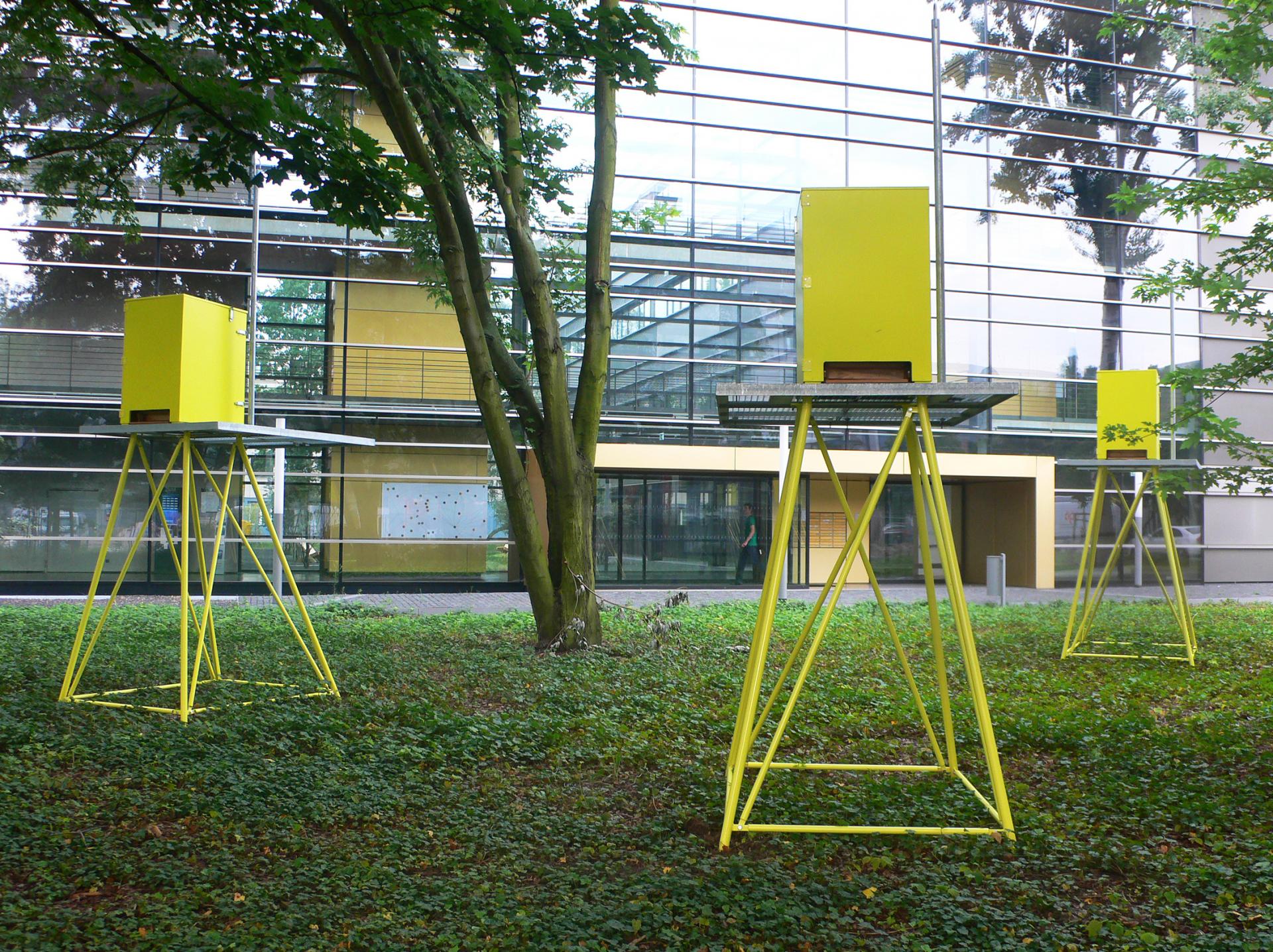smart systems
Centre for Microsystems and Materials (ZMM), Berlin, 2012
Client: Wista-Management GmbH
4 honeybee colonies, wood, steel, digital print
Expert consulting and care for bee colonies: Virág Major (till autumn 2020: Erika Mayr)
The original inspiration, a "natural source" for microsystems technology, has colonised the highly technology-oriented centre in the form of bees.
Bees are a perfect model of networked microsystems. Despite their very small brains – around 10,000 times smaller than those of humans – they have sophisticated communication systems. Bees are able to encode and decode information and can work together in a coordinated way. A population consisting of many thousands of bees forms a social unit based on a high degree of organisation, with the ability to greatly outperform the potential of individual insects.
"We discovered that bees have a truly amazing ability to learn with respect to solving new and complex tasks. (...) The knowledge of how biological systems handle such visual challenges may help software developers to learn more and reach entirely new approaches and solutions. The core idea is based on tiny brains potentially having highly effective solution methods, which we could present more simply than those derived from the brains of primates, which are quite difficult to understand and represent."
(Alexander v. Humboldt Foundation, interview with the sensory physiologist Prof. Adrian Dyer, 2008)
The boundaries between living and artificial systems are becoming increasingly blurred. Microsystems technology that replicates the functions of living organisms itself becomes part of a (human) organism through intelligent implants.
More than 50 years ago, the philosopher Günther Anders addressed the contrast between the imperfection of people and the ever-greater perfection of the technology they develop: "It is indeed not impossible that we, who produce these products, are about to establish a world with which we are unable to keep up and which we are absolutely unable to grasp, in terms of our imagination, our emotions and our responsibility."
(Günter Anders, "The Outdatedness of Human Beings, Volume 1", 1956)
The mural in the foyer of the ZMM picks up on that theme and connects it with texts from research on bees.







